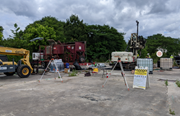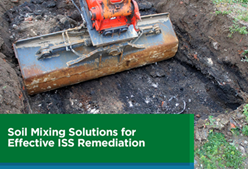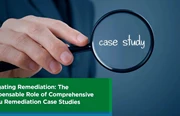Expert Insight: EPA provides a one-two knockout punch for PFAS!
On April 10, 2024 the U.S. Environmental Protection Agency (EPA) categorized a pair of widely used industrial chemicals, PFOS and PFOA, as hazardous substances under the country's Superfund program.
Fifteen days later the EPA announced its first drinking water standards to guard against PFAS pollution.
The Superfund designations will ensure that responsible parties "pay for the costs to clean up pollution threatening the health of communities," EPA Administrator Michael Regan said in a statement. The EPA has reported that it would prioritize enforcement against significant contributors to the release of PFAS, such as federal facilities and manufacturers.
Not everyone is jumping for joy with these two final rule makings.
The American Chemistry Council called the rule "severely flawed" and said the chemicals have not been produced in the United States in nearly a decade. The Superfund program "is an expensive, ineffective and unworkable means to achieve remediation for these chemicals," the group said in a statement.
Meanwhile Environmental groups praised the EPA's move. "These designations will give PFAS-contaminated sites the attention they deserve," Earth justice attorney Jonathan Kalmuss-Katz said in a statement.
If you’re concerned about possible PFAS soil or groundwater impacts on your business or property value:
-
Include PFAS in your site investigations. The analytical costs are greater than traditional sampling methods, however, the potential risks of not being fully informed of the extent of the contamination are substantial. And remember, PFAS moves quickly in groundwater, so the longer you wait, the larger the treatment area will be.
-
If you find regulated PFAS compounds, it’s time to discuss with your attorney or consultant what your next steps should be in terms of source identification, regulatory notifications and compliance, litigation risk mitigation, or what this might mean finalizing real estate transactions.
-
If you eventually find yourself having to remediate soil or groundwater, connect with Cascade for innovative in situ PFAS treatment technology alternatives to pump and treat.
One note of caution:
One common situation for PFAS contamination is fighting fires and fire training. These have been some of the largest releases by industry or government. While DOD has been very aggressive in gearing up to address PFAS, there have been thousands of car fires, tanker spills/fires, and gas station fires across the U.S. for many years. Most of these incidents have been managed with AFFF firefighting foam. If you own these properties or adjacent properties that have been impacted, it makes sense to proactively look for PFAS and take action against those responsible for the releases. In many cases, this would be local fire departments or fuel haulers. Fire departments may be tougher to get relief since regulators said they do not intend to sue fire departments that may have inadvertently polluted drinking water supplies by using PFAS-laden products.

















